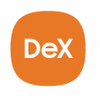Get more done on your Android or Chromebook with this updated operating system with flex
Get more done on your Android or Chromebook with this updated operating system with flex
Pros
- Relatively light on resources
- Works with a large array of different hardware products
- Comes with a clean interface that's easy to use
- Features many handy keyboard shortcuts
Cons
- Usually replaces an existing OS install
- Not a traditional GNU/Linux implementation
- Doesn't normally run native Windows apps
Chrome OS Flex is a slimmed-down version of the conventional Chromebook operating system, which is designed to work with a wider array of hardware devices than most distributions. While it technically works on existing Windows-based PCs, the software can replace a stock OS installation. That puts it in the same category as other alternative system software packages.
Privacy-conscious users will appreciate this feature, since they can wipe out an old instance of whatever they were running before and replace it with Chrome OS Flex. As the name suggests, Flex is meant to cover as many possible motherboard configurations as possible. That makes it an attractive option for those who want to try it on desktop as well as laptop computers.
Owners of x86_64 tablet machines shouldn't run into too much trouble, either. If they install Chrome OS Flex and plug in a keyboard via a USB or Bluetooth adapter, then they can enjoy the same range of keyboard shortcuts as everyone else. No matter what device you decide to try it out on, Flex should be able to support packages made for the Chrome OS platform.
That's because it's a GNU/Linux distribution at its core, albeit one that's extremely easy to configure and use. Anybody who wants to permanently install it can normally accept most of the defaults, since the installer will partition and format their storage devices for them before copying files. Granted, it's possible to accidentally do quite a bit of damage to an otherwise working computer by doing so.
Power users who have no trouble avoiding these maladies may very well love Flex in spite of the fact that it doesn't really work with native Windows apps. It's possible to get conventional Linux packages installed on top of Flex, but it's usually much easier to just stick with software that's been developed specifically with the Chrome OS platform in mind.
Fortunately, most people won't have to worry about these hiccups unless they happen to be software developers themselves. A large number of apps come with Flex to begin with anyway. Anybody who wants an opportunity to try out an efficient Linux distro without having to jump through hoops should appreciate this feature. They can even give it a test drive without making any changes to the underlying system.
As with any live ISO, this means that those who want to boot into an alternative OS without messing anything up can use Flex without any consideration. That might very well make it attractive to a secondary group of people who plan to use it far outside of its original design specifications.
Pros
- Relatively light on resources
- Works with a large array of different hardware products
- Comes with a clean interface that's easy to use
- Features many handy keyboard shortcuts
Cons
- Usually replaces an existing OS install
- Not a traditional GNU/Linux implementation
- Doesn't normally run native Windows apps




